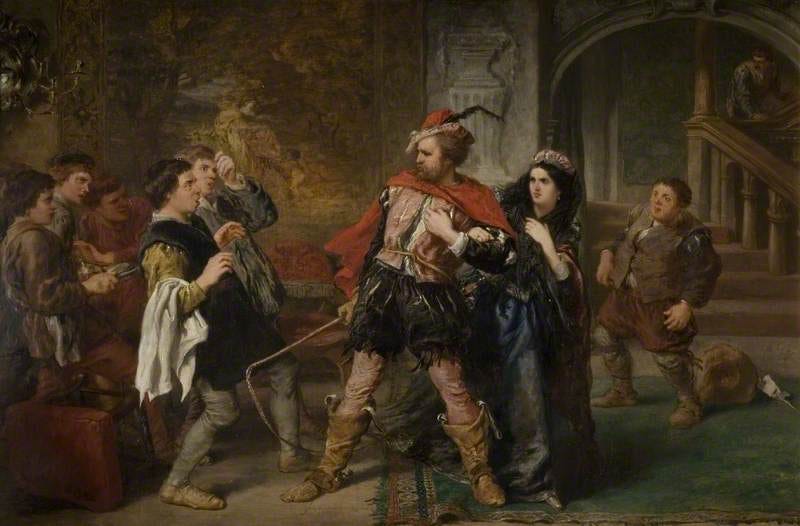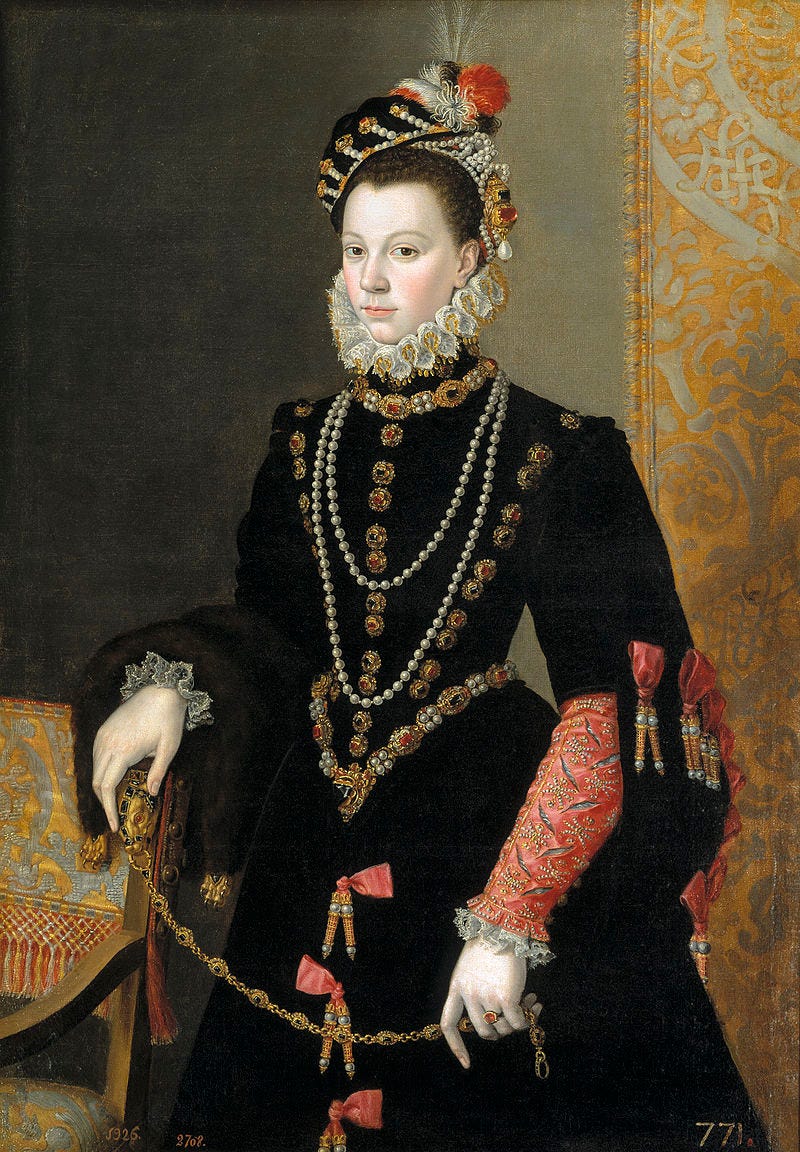
What an odd play The Taming of the Shew is. It’s an early one - perhaps not as early as The Comedy of Errors - but there’s a lot of dense, antiquated language in it. I wanted to write about this, rather than the ‘battle of the sexes’ plot, but I couldn’t help noticing that Emma Smith (in her excellent series of lectures for the University of Oxford) thinks this is one of Shakespeare’s most ambiguous plays - ambiguous because we are uncomfortable with Katherina’s subservience at the end. Smith claims this ending was just as controversial for the Elizabethans, and, later, John Fletcher did try to balance things out with The Tamer Tamed, in which Petruchio gets a taste of his own medicine.
Anyway, back to the language. I have also just finished reading Christopher Marlowe’s Edward II (published in 1593) and was staggered to discover that Shakespeare probably wrote The Taming of the Shrew around 1594 (although the play was not printed until the First Folio in 1623). Marlowe’s language, though much less poetic, has a kind of clarity about it which is utterly different from Shakespeare’s in Shrew. One of the problems with this comparison is that we probably don’t have Shakespeare’s original text; scholars think that we may have an amalgam of ‘remembered bits’, noted down by actors, which might explain why it feels a bit uneven.
However, one scene I rather liked is when the servant, Biondello, comes in to describe Petruchio approaching on a horse. It’s one of those situations where there’s almost more footnotes per page than there is dialogue:
Why, Petruchio is coming in a new hat and an old jerkin; a pair of old breeches thrice turned; a pair of boots that have been candle-cases, one buckled, another laced; an old rusty sword ta'en out of the town armory, with a broken hilt and chapeless, with two broken points; his horse hipped, with an old mothy saddle and stirrups of no kindred; besides, possessed with the glanders and like to mose in the chine; troubled with the lampass, infected with the fashions, full of windgalls, sped with spavins, rayed with yellows, past cure of the fives, stark spoiled with the staggers, begnawn with the bots, swayed in the back and shoulder-shotten, near-legged before and with a half-checked bit and a head-stall of sheep’s leather which, being restrained to keep him from stumbling, hath been often burst and now repaired with knots; one girth six time pieced, and a woman’s crupper of velure which hath two letters for her name fairly set down in studs, and here and there pieced with packthread.1
What does half of this mean? It’s anyone’s guess - particularly “mose in the chine” (“the verb ‘mose’ is not known outside this passage”). But precise meanings don’t matter because it’s intended to be rattled off, and it also helps to set-up a visual gag which follows. In his TV version for the BBC, Jonathan Miller has Petruchio - played by
- enter after this speech bare-chested with an outsized flower in his buttonhole and a stupid hat.While we’re on the subject of antiquated language, there’s another striking phrase in this play which sent me scurrying off to Google:
Grumio [to Hortensio]: Marry him to a puppet or an aglet-baby …2
Again, there is no precise meaning for “aglet-baby” but I was interested to discover that, today, we use “aglet” (or aiguillette) to mean either that bit of plastic on the end of a shoelace which stops the fibres unravelling - or an ornamental braided cord with decorative metal tips (used in military and academic dress).3 The Elizabethans used aglets for both practical and decorative reasons and in Scotland they were known as “horns”. Elizabeth of Valois, Queen of Spain, wears them below on her sleeves and skirt to keep her ribbons in place. Perhaps Shakespeare had seen decorative aglets in the shape of babies? Who knows?

As well as the BBC TV version, I also watched the Richard Burton/Elizabeth Taylor film, directed by Franco Zeffirelli, which works as popular entertainment but messes with the text to give prominence to Katherina and Petruchio’s plot, while reducing the Bianca plot (the latter is important to the overall meaning of the play in my opinion). Needless to say, the scene with Biondello announcing the arrival of Petruchio on a horse is cut massively, thus reducing the comic impact of his entrance. This film is chiefly of interest because of its stars and the imagined parallels with their own off-scteen relationship, which has (to be fair) been an enduring reason for filming it (see the 1929 version with Mary Pickford and her husband Douglas Fairbanks). However, if you want a faithful version, you can’t go wrong with Miller’s BBC film, which contains excellent performances and keeps the text intact.
I’m using the Arden 2nd edition, pp. 225-229.
Ibid., p. 188.
Henry VIII owned a coat with “12 pairs of aiglets”.





It is an oddity isn't it? I think it's the only Shakespeare play where the main action is framed by an external reality - the play is in effect a presentation by travelling players before Christopher Sly and his pals. The framing device adds nothing, as far as I can tell, and in productions I have seen it has been completely jettisoned. The language is difficult at times, but no more so than contemporary plays, I'd say. Sometimes very specific allusions are just lost to us.